Green tea covers a broad spectrum of teas that are made from the Camellia Sinensis plant. The main thing that differentiates green tea from other forms of tea made from the same plant, such as black tea, oolong tea and white tea is in the way the tea leaves are processed after picking or harvesting from the tea plant. Green tea is the most common and popular tea grown and consumed in China and is the primary tea in Japan.
What is Green Tea and What Makes it Different From Other Teas
Green tea is non-oxidized, meaning the natural wilting and oxidizing that occurs once the leaves are picked off the plant is prevented from happening by applying heat to the leaves. (Oxidization is a common phenomenon that occurs with many plants when exposed to oxygen – for example a banana when peeled will oxidize gradually and go black or an apple will start to go brown). Heating the tea leaves slightly stops this process with green tea. Most Chinese green teas are heated by lightly pan frying or oven baking the leaves whereas the Japanese process is usually done by steaming the leaves. Each of the ways are effective, but the methods affect the final taste of the tea. Chinese pan fried green teas tend to be a little more earthy tasting whereas the Japanese steamed green teas tend towards more “vege” or “leafy” tasting.
Different Kinds or Green Tea
There are literally hundreds of different kinds of green teas. Here are some of the factors that affect the different types and quality.
Varietals (cultivars) : While all teas originate from the Camellia Sinensis tea plant, there are many hundreds of varieties or cultivars available and certain cultivars are recommended for specific green teas. For example most Japanese green teas are made from the Yabukita cultivar.
Growing Conditions and Harvest Times: Tea plants for making green tea are usually grown in the sun. Some tea plants, however are shaded for 2 to 3 weeks just prior to harvesting. (this is the case with high grade Japanese Gyokuro green tea and also for Tencha – the green tea leaf that is ground into Matcha powder. (for more information on Matcha green tea click HERE)
The soil condition, climate, location, environment and elevation all play a part in the final outcome of the tea harvested and processed.
Tea plants can be harvested 2 or 3 or sometimes even 4 times per year. The first picking is usually late April, early May. This first harvest, or first flush usually provides the highest quality leaf and makes the best tea. It is also usually the most expensive tea. The picking of the leaf also affects the tea quality and first pickings are usually more selective and pick the tenderest leafs and buds to make the finest teas.
Processing techniques: The biggest defining factor in the different green teas is the way the tea is processed. As a result some green teas not only taste quite different from each other when brewed, but they also look very different in their original dry tea state. Each type of green tea has its own unique taste and flavor profile as well as its visual appearance – shape, size, color. Here are some images of some of the more popular and well known green teas. Within each of these tea types there are many grades and qualities and, of course price points.
Brewing Green Tea
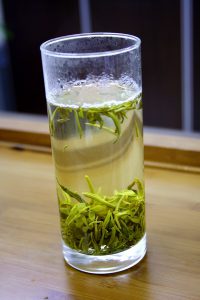
Lonjing green tea being steeped in a tall drinking glass. Once the tea leaves sink to the bottom, the tea can be consumed and the glass refilled with hot water for re-steeping several times
Green tea is brewed at a lower temperature than black tea and most oolong teas – usually not higher than 87°C/189°F. For some premium grade green teas such as Gyokuro the temperature should be much lower – usually not more than 65°C/150°F. As a general guide the higher the quality of the green tea the lower the water temperature required for steeping. Using water that is too hot can cause green tea to be overly astringent and bitter tasting. A brewing time of 2 to 3 minutes maximum is fine – or even less time is needed for some premium grade delicate green teas. Many high grade green teas however can remain enjoyable to drink even with the tea leaves remaining in the brew for an extended period of time – unlike most black teas that become overly astringent if the tea is not strained off the tea leaves after some time. High quality green teas can usually be re-steeped 2 or 3 times.
Do you have a favorite green tea?
If you are looking for some suggested stores to buy good teas online you can find some listed in this article this article. Enjoy!


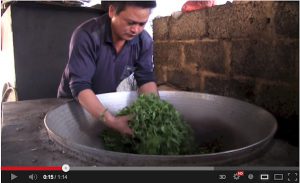
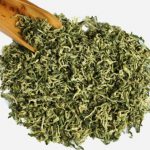
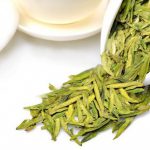
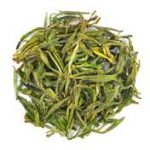
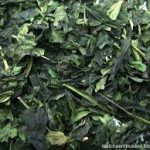
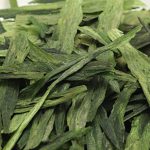

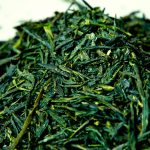

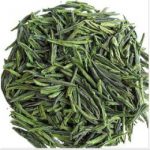

I am great fan of green tea. I have tried various brands and each one tasted different. Wondered why the taste differed. Your article gave a in depth information about how the leaves are processed and why each one taste different. I just have a doubt. Hope you can clarify it. Some of the green teas give a rich green and some a pale color. Do they add any coloring agents to give a attractive color or its natural?
The green teas that I am referring to here are 100% natural green teas, with no additives whatsoever. The color of the infused leaf will vary quite a bit. Green teas that have been shaded such as Gyokuro and Tencha will naturally be a richer more vibrant green color.
As far as adding a coloring agent, this is usually not done unless it is a processed commercially sold packaged tea, such as some iced tea and ready to drink teas.
Hi
Great Article
Good to find some information on what exactly green tea is and the different kinds of green tea.
Green tea is something I like to have after a gym session as I like the taste and it helps me relax. In saying that I really didn’t know there were so many different kinds of Green Tea available.
Now I know and Im glad I stumbled across your very interesting website.
Cheers
Thanks Chris, Yes, there are plenty of green teas out there to choose from. I hope you get a chance to try a few different varieties.
Hi Peter,
I enjoyed reading your Article. I drink green tea everyday, but have never really taken the time to think about what it is. I just knew it was healthier and made me feel better. I have been drinking the Twinnings green tea, probably not the best, but would you recommend high grade Japanese Gyokuro green tea as the best one?
Hi Melanie,
Yes, Gyokuro is a very premium gourmet green tea and usually quite expensive. There are a lot of other very good loose leaf green teas that you could “transition” to from Twinnings before exploring Gyokuro. Some Japanese Sencha teas for example, are very good at a much lower price as are many of the Chinese green teas listed in the article. We are promoting two very nice tasting Jasmine Green teas on our Amazon Tea store you may find enjoyable. See http://amzn.to/2m2sOZt and http://amzn.to/2m2uFNG